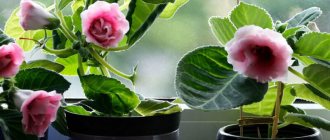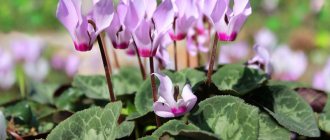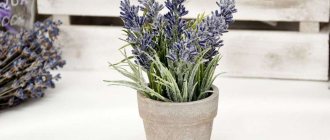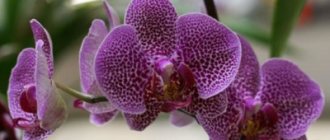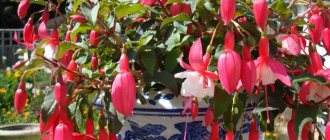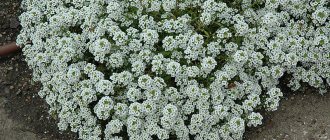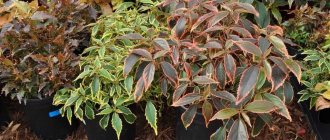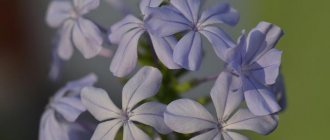- September 6, 2018
- Flowers
- Ksenia Stepanishcheva
Indoor plants perfectly decorate the home environment. Chrysanthemum looks great in a pot. Home care ensures beautiful flowering. There are many varieties of chrysanthemums, differing in types, shapes, colors, bush sizes, buds, so they are easy to choose for the interior of your home. The rules of care are described in the article.
A little history
Chrysanthemums are herbaceous annual and perennial plants belonging to the Asteraceae family, which includes 29 species. For thousands of years, they have grown in temperate and cool climates, usually in Asia.
In Europe, plants began to be cultivated in the 17th century. The chrysanthemum is considered a symbol of the imperial family in Japan. In China, the plant is considered medicinal; drugs are made on its basis for the treatment of gastrointestinal tract, eye ailments, migraines, and nervous diseases. The room also becomes more comfortable if there is a homemade chrysanthemum in a pot. How to care for it so that the flower actively develops? It is required to follow simple rules, which will be discussed below.
Beneficial features
The plant releases active substances - phytoncides, which effectively clean the air from gases and harmful impurities that enter the room from the street. It will be very useful to have this flower at home. A chrysanthemum in a pot can enliven any interior, because during the flowering period it is especially beautiful.
The aroma of the plant is useful - its smell heals the nerves and perfectly calms. This is why many people choose chrysanthemums in a pot. Care at home does not require much effort and ensures beautiful flowering and normal development.
Dependence of chrysanthemum variety and its flowering
The flowering of chrysanthemum plants in late autumn is stimulated by reduced daylight hours. That is, when it starts to get dark early, these flowers lay buds. Flowering itself begins in late autumn. But here it is worth noting that different varieties of chrysanthemums lay buds at different rates. If you have a late variety plant, then there is a high probability that all this will happen too late. The flower simply will not have time to appear before you in all its glory. The cold weather will come and the buds will remain just buds. Therefore, before buying cuttings, carefully check the characteristics of the varieties. After all, perhaps the flower you like cannot grow normally in the local climate.
What to do if you have already bought a late variety chrysanthemum? There is a way out in such a situation. The plant will bloom if you plant it not outside, but in a greenhouse, greenhouse, or just in a flower pot. You can plant the cuttings in a flowerpot initially, immediately after purchase.
You can also transplant from the street if the plant has already taken root, and later you realized that it does not have time to bloom. Simply dig up the cuttings and transplant them into a prepared container.
It is worth noting that all chrysanthemums that are sold at the end of October-November are greenhouse ones. They are grown specifically for bouquets. You should not hope that flowers of these varieties will bloom luxuriantly in your outdoor garden.
Choice
Not only high-quality care for chrysanthemums in a pot is important, but the right choice. You should not purchase plants with blooming flowers, as they quickly fade. The bushes must be formed. It is important that the leaves are green, the bottom is a little woody, and the roots are strong and strong. Spots, inclusions, and mechanical damage indicate that such a flower should not be purchased, since it will hurt and may even die.
For your home, it is better to choose a miniature chrysanthemum, which is 15-70 cm in height. The stems of the plant should be smooth or slightly fleecy. The leaves of a healthy flower are bright, soft green, dissected or jagged, smooth or with fibers. The diameter of the buds varies - from 2.5 cm to 25 cm. Flowering forms may vary. Flowers are divided into single, double, pompom and double row.
Particularly in demand are bush chrysanthemums, which have non-double flowers similar in shape to daisies, as well as varieties that form a ball when flowering. For terraces and loggias, cascade-shaped plants are chosen that are suitable for hanging gardening.
Mulberry-leaved, spherical, and shrubby varieties are ideal for the home. They also choose Korean, Indian, Chinese varieties, they bloom very luxuriantly. The color can be white, yellow, orange, pink, green. The cores usually contrast in color with the petals.
According to reviews, many people like chrysanthemum in a pot. Home care is easy. If you follow it, you can achieve beautiful flowering. The main nuances of care are presented below.
Classification of chrysanthemums
Plants are classified as follows:
- Sizes: large-flowered and small-flowered (less than 80 cm).
- According to the shape of the inflorescences: double, blanket, non-double, double-row, pinnate, bristly, anemoid.
- Flowering dates: early, mid, late flowering.
- Stem height: tall (45-60), medium (30-45 cm), short (15-30 cm).
- Flower shape: chamomile, spherical.
Lighting and temperature
How to care for indoor chrysanthemum? Compliance with lighting and temperature regulations is required. Pots should be installed on the eastern or western side. In the north, chrysanthemums cannot bloom, and in the south they wither and get sick. Direct sunlight and extreme heat are harmful to plants. The sun can damage the leaves and cause burns. It is advisable to install pots on a lighted, cool balcony or loggia.
If the plants do not bloom and disappear, then you need to check whether they have enough light. Poor lighting, as well as excess lighting, is harmful to chrysanthemums. Daylight hours for them should be no less than 7 and no more than 10 hours a day. It is important that in summer the temperature is +20 ... +23 degrees, in autumn and spring - +15 ... +18, and in winter - +3 ... +8. If these standards are observed, many buds appear. Flowering will be lush and long lasting.
How to care for indoor chrysanthemum after purchase
Before you buy a flower in a store, you should carefully examine it. The bush should look healthy and strong, with green leaves without any spots. It is best to choose a chrysanthemum with buds so that it can bloom for a long time at home. You should carefully examine the leaves, which should be free of any pests.
A new plant needs to adapt to new conditions, so the bush is placed in a well-lit place, but where there is no direct sunlight. Water the flower as needed.
Attention! If the buds of a recently purchased chrysanthemum begin to fall off or dry out, the flower gets used to the new conditions.
After about two weeks, when the plant adapts, it will need to be transplanted into new soil, since flowers are sold in peat in stores. If there are flowers on the bush, replanting can be postponed until after flowering.
Watering
If you have acquired a home chrysanthemum, care involves watering. This must be done often. Flowers are watered in the evening, when the sun has set, 2 times a week. In winter, watering is reduced. The need for the procedure can be determined by the drying of the top of the soil. The main thing is that the soil does not dry out, as this causes yellowing and falling of the leaves.
Chrysanthemums are lovers of water, but too much of it is harmful to them. When there is heavy flooding, mold and fungi form in the ground, and the flower begins to hurt. You should not pour water into the pan. It is important to water frequently, but not abundantly. The water should be warm and settled. Spraying from a spray bottle is necessary. Humidifiers should be installed near plants.
How to choose a complex fertilizer
In addition to mineral, organic and homemade fertilizers, you can use ready-made complex preparations, which are chosen taking into account the current needs of the crop. The most effective preparations that gardeners use to feed chrysanthemums in spring and summer are Kemira and Kemira Lux. These formulations contain a balanced NPK complex, providing the crop with everything necessary for growth and development for a long time. To accelerate growth and improve decorative qualities, the drug “Beauty” from Bona Forte is also suitable, and in order to prolong the flowering period, chrysanthemums are fed with the drug “Bud” in the summer. In addition to sodium salts, this growth stimulator contains polysaccharides, vitamins and humates. Before use, the drug is diluted with water in a 1:1 ratio.
Trimming
If you follow the rules of care at home, your indoor chrysanthemum will bloom beautifully. And to prolong this stage, pruning and shaping of bushes is required. In order for the plants to bloom magnificently, their tops are pinched 2 times during the growing season. This procedure is performed before the appearance of new buds (early March) and before the appearance of buds (mid-August).
It is necessary to cut off thin, protruding, curved shoots and yellow leaves. This way you can achieve the correct shape. If the branches have become elongated for the winter, they are pruned. By autumn, without pruning, the bushes will be shapeless, elongated, and flowering will be uneven.
Feeding
How to care for a chrysanthemum in a pot to achieve beautiful and long-lasting flowering? It is necessary to feed them. Fertilizers are applied after replanting the bushes. This procedure uses a solution of “Kristalon”, “Bona Forte” or another fertilizer, which consists of nitrogen, magnesium, potassium, zinc, and phosphorus. Feeding is necessary for the development of the plant and ensures good flowering.
During the formation of bushes, nitrogen fertilizers are used. Before flowering, phosphorus-potassium products are used. An infusion of bird droppings, diluted with water (ratio 1:30), is suitable. The solution is applied until the buds appear every 5 days.
Types of fertilizers
Fertilizers for chrysanthemums are used several times a season and are chosen depending on the growing method (in a flowerbed or in a pot) and the needs of the crop. So, to stimulate growth, mullein and bird droppings are used, which enrich the soil with nitrogen. To strengthen the leaves and roots, ash containing potassium and phosphorus is added to the manure. Urea will help strengthen young shoots. During budding, when the plant needs potassium, a mixture of mullein and superphosphate is used. To make the flower bed bloom earlier than the neighbors, prepare an infusion of nettle and dandelion.
Mineral preparations
Mineral fertilizer for chrysanthemums is selected taking into account the active ingredients and their purpose:
- phosphorus (superphosphate, potassium phosphate) - stimulates root development, plant growth and flowering;
- potassium (potassium salt) - improves flowering, strengthens immunity to disease;
- manganese (manganese sulfate) - to combat chlorosis;
- calcium (nitrate, calcium sulfide) - to strengthen the roots;
- iron (ferrous chloride, ferrous sulfate) - stimulates growth;
- boron (boric acid) - strengthens roots, prolongs the flowering period;
- magnesium (magnesium sulfate) - improves leaf color;
- nitrogen (ammonium, potassium, calcium nitrate) - accelerates growth;
- copper - helps fight fungi;
- zinc (zinc sulfate) - used if the greens have turned yellow.
Organic fertilizers
In the spring, when the plants grow green, the soil is fertilized with mullein or chicken droppings, which are first filled with water and left to ferment for 3 days. Next, the resulting concentrate is diluted with water 1:10 and used for watering at the rate of 1 liter for each bush.
Traditional methods
One of the popular and effective options for feeding chrysanthemums in the summer (June - August) is nettle infusion. Nettle contains a lot of nutrients, including the NPK complex. Preparing the infusion is simple: fill a bucket 2/3 full with chopped herbs and fill it to the top with water. Leave to ferment under the lid. To speed up the process, you can add 1 tbsp. l. fresh yeast. After 7–10 days, the concentrate is ready. The infusion is diluted with water in a ratio of 1:10 and used to feed chrysanthemums in July - August every 2 weeks.
According to flower growers, this is one of the best fertilizers for chrysanthemums for rapid flowering. To increase its effectiveness, dandelions are added to the nettle at the preparation stage. The plants are also crushed, mixed with crushed nettles, and yeast is added to speed up ripening. Infuse under the lid for a week, dilute with water and use according to the scheme indicated above. In addition to dandelions, you can add chamomile, wheatgrass, yarrow and other weeds to the nettle infusion. The main thing is to collect them before flowering, so as not to sow the flower beds with weeds at the same time as watering.
Transplantation
How to care for home chrysanthemum so that the flower develops normally? After acquisition, the plant is transplanted into a new container that has drainage holes. It is advisable to choose a ceramic or clay pot. The new container should be 2 cm wider and 1.5 liters deeper than the previous one.
Young bushes need to be replanted once a year, and adults - once every 2 years. Active growth time begins in March. The plant can be transplanted into a new pot. Before this, the chrysanthemum is prepared. The composition of the soil should be the same (soil, turf or peat, deciduous soil, humus, sand in the ratio 4:4:1:1:1).
To disinfect the substrate, it is poured with boiling water with a weak solution of potassium permanganate or calcined in the oven for 3 hours at 100 degrees. After pouring boiling water, dry it. Store-bought soil mixture should not be processed. Expanded clay and vermiculite serve as drainage. The bush must be replanted completely or divided into fragments. New chrysanthemums are formed from the separated parts.
Diseases and pests
The delicate flower is easily susceptible to diseases and pests.
| Manifestation on leaves | Cause | Corrective measures |
| Gray and fluffy coating. | Gray rot. | The following drugs are used: Topsin-M, Fundazol. |
| Dried underneath with yellow and red spots. | Septoria. | Infected leaves are cut off and destroyed and treated with copper oxychloride. |
| Gray coating. | Powdery mildew. | Spray with Bordeaux mixture, Topaz, Sling. |
| Pale spots above, orange below. | Rust. | They use copper oxychloride, Abiga-Pik. |
| Yellow, flaccid, shoots die, roots are affected. | Verticillium. | Treated with Glyocladin, Trichodermin, transplanted. |
| They wither, turn yellow, fall off. | Fungus in the soil. | The affected parts are cut off and replanted in new soil with a pH of 6.5-7. |
| Small spots. | Mosaic. | The diseased ones are cut and replanted. |
| Yellow-brown spots dry out and fall off. | Nematode. | The affected parts are removed, replanted, and treated with insecticides. |
| The buds curl, become deformed, and do not open. | Aphid. | Treated with Actellik, Fitoverm. |
| Light dots on the lower part, gray-brown on top. | Thrips. | Intavir, Decis are used for treatment. |
| Pale yellow with white spots. | Spider mite. | Treat with a weak soap solution, Fufan, Fitoverm. |
Reproduction
Judging by the photo, the chrysanthemums in pots are very beautiful. Therefore, many housewives breed several species at once. Their reproduction occurs by seeds, dividing the bush or cuttings. When flowering is completed, seeds are formed in the bud, which are used for sowing.
At home, chrysanthemums are rarely grown from seeds; this is a long method. This requires seedling pots or containers, as well as greenhouse growing conditions with normal humidity and temperature. Seeds are placed in the soil and covered with a thin layer of sand. Then the container should be sprayed with warm water from a spray bottle, covered with film and placed in a cool place. The film must be opened periodically to ventilate and eliminate condensation.
After half a month, sprouts form. The seedlings are placed on the windowsill, and after 3-4 leaves have formed, they are transplanted into separate pots. After rooting, pinch the top to create a round bush shape. This growing process takes longer.
Gardeners usually choose budding and cuttings. If the bush is propagated by budding, after wintering it must be pulled out of the pot, the earthen lump removed and the roots divided into parts. From 1 bush you get 5-6 bushes. Divided plants should be planted in pots with fertile soil. Young seedlings require frequent watering. It should be watered every 2-3 days. It is better to propagate by cuttings in early spring.
After shoots appear on overwintered stems, cuttings 12 cm long emerge from the side stems. To quickly root them, the lower part is placed in a solution of growth stimulants, for example, “Kornevin”. The cuttings should be planted in the prepared substrate to a depth of 1.5 cm.
The container will be a box or plastic cups with holes in the bottom. After planting the cuttings, the containers must be covered with a transparent film to ensure a greenhouse effect. The film is regularly opened slightly for ventilation. As chrysanthemums grow, they are transplanted into pots with a diameter of 10-13 cm. When new leaves appear, the top is pinched, which is necessary to stimulate the growth of side shoots.
How to propagate garden chrysanthemum by cuttings in spring
The mother bush of the plant is harvested in the fall as follows:
- Before permanent frosts set in, cut off the above-ground part of the plant, leaving stumps 4–5 cm high.
- Dig up the desired chrysanthemum bush with a lump of earth and plant it in a container suitable for the size of the roots.
- The free space in the pot is filled with peat, sand or garden soil.
For the winter, the container with the bush is placed in a dark, cool basement or cellar. The optimal temperature should be kept within 0…+5 degrees. If the temperature is higher, the shoots will begin to grow. The plant becomes depleted, and the shoots stretch out and only interfere with the chrysanthemum. It is very important to maintain low humidity in the room where the uterine bushes are stored. We also monitor the soil moisture level in the pot. If the soil is dry, you need to water it a little.
1.5–2 weeks before the end of the calendar winter, we bring the mother bushes into a warm, bright room and water them abundantly. And then follow the instructions:
- After 1–2 weeks, the chrysanthemum will grow new shoots. When they grow to 8–10 cm, they can be cut and rooted. A couple of leaves should be left on the stumps of the mother bush so that the plant does not suffer.
- Short shoots should not be used for cuttings. They often rot and do not take root.
- The two lower leaves of the cut cuttings are removed. We make the lower cut oblique. We dip it in any root formation stimulator.
- We plant it in a loose substrate, deepening it by 1.5–2 cm.
| Note! If many cuttings are planted in one container at once, then the distance between them is 4–5 cm. It is better to plant 2–3 cuttings at once in cups and small pots. |
- After planting, water it abundantly and create a mini-greenhouse, covering it with film or a lid.
Photo pexels/Teona Swift: Cuttings are planted in loose substrate.
Bloom
If you grow chrysanthemums in a pot, care at home should be individual. Then beautiful flowering is ensured. Usually the duration of this period is more than a month, the process occurs in the autumn period. For lush flowering during the growing season until August, you need to pinch the shoots 2-3 times. For the active development and formation of a larger number of buds, biological products are used - “Bud”, “Epin”, “Zircon”. Each product comes with instructions for proper use.
The use of a light solution of potassium humate leads to rapid flower growth, an increase in the number and size of buds. In the future, when flowering, regular pruning of dried stems and faded buds is required so that there are no favorable conditions for pests. In addition, this spoils the decorative appearance.
If an indoor chrysanthemum has stopped blooming, care at home requires urgent rehabilitation. It is necessary to shorten the stems to 10-15 cm. The plant is installed on a balcony, in a cellar, pantry or window sill. It can be replanted in early spring.
Features of winter care
In winter, care for home chrysanthemums in pots is also required. After flowering is completed, the bushes must be trimmed, leaving 15 cm of length and placed in a dry place where the temperature is 5-8 degrees and there is good light. Watering should be done approximately once a month.
If it is not possible to take the flower to a cool place, then leave it on the windowsill. Flowers must be trimmed, dry buds, leaves, and branches removed. In warm conditions, watering is indistinguishable from the growing season.
Methods and methods for propagating potted chrysanthemums
There are 3 main ways to propagate home chrysanthemums:
1. Separation of adult bushes. This method is carried out before winter or after flowering ends. The bush is carefully removed from the soil and disassembled from the root. This must be done extremely carefully so as not to damage the rhizome.
2.Seeds. This method is quite troublesome. Although the seeds germinate well, the plant itself requires a long wait. After all, you will have to wait for more than one year for flowering.
3.Method of cuttings. We have already considered this option a little higher. You can cut a cutting from a bouquet flower or pick it from a garden bed. Then you need to pinch the top, remove all the leaves and the flower. Then you need to root the stick in water or moistened soil. After this, the cuttings are planted in pots. This is done either in a large container, at a distance of at least 30 centimeters from each other, or in separate medium-sized pots.
Care after winter
In mid-March, spring work is carried out, which includes the following stages:
- Transplanting the plant into nutrient soil. For 1 low-growing chrysanthemum you need a pot 9 cm in diameter. And for 3 plants, choose 11 cm. All 3 cuttings must be planted along the edges of the container.
- The flower should be placed in a sunny part.
- It is necessary to regularly water and feed the plant with nitrogen fertilizers. The first procedure is performed after 2 weeks. To speed up the growth of greenery, nitrogen fertilizers are required, and before flowering, products with phosphorus and potassium are used. Stimulants and regulators are used to strengthen plants.
Later you need to prune the chrysanthemum. Then its shape will be beautiful. It is also necessary to pinch out fresh shoots to keep the plant miniature.
Popular varieties for growing at home
There are more than 40 varieties of indoor chrysanthemum, including Indian, Chinese (mulberry), and Korean.
| Variety | Peculiarities | Flowers |
| Golden Gloria | Compact, blooms profusely. | Yellow. |
| Lelia | Medium height up to 50 cm. | Terry, dark crimson. |
| Hazell | Bush up to 50 cm. | Spoon-shaped, orange petals. |
| Orange Jam | Ball-shaped, Korean. | Bright orange. |
| Zembla mix | Large buds and tall shoots. | They bloom in autumn, some are green in the middle, different colors. |
| Aurora | Tall, medium-sized inflorescences. | Orange. |
| Snow Elf | Tall stems. | Terry, white. |
| Fantasy | Bush up to 20 cm. | Hot pink, terry. |
| Pink Cascade | Falling shoots are placed in hanging flowerpots. | Pink. |
| Meridian | Low-growing, spherical, leaves are not visible under the blossoming petals. | Semi-double, burgundy, yellow in the middle. |
| apple blossom | The bush is lush, grows up to 0.5 meters. | Terry, pink. |
| Okishor | Up to 50 cm high, large inflorescences 6-8 cm in diameter. | Lilac. |
| Flamingo | Hemispherical, erect bush, inflorescences up to 7 cm in diameter. | Light pink with pearl shimmer. |
| Mascot | Lush, small bush up to 25 cm. | Raspberry. |
| Dune | Grows up to 50 cm. Changes color during flowering. | Bright, yellow-brown. |
| First snow | Up to 35 cm tall, voluminous bush. | White. |
| Malchish-Kibalchish | More than 50 cm high and about 60 wide. | Red, purple. |
Actions in the absence of flowering
If proper care is provided, flowering occurs in the fall. The absence of this phenomenon indicates a violation of the rules of care. With late pruning, lack of light, unsuitable soil and lack of fertilizing, buds do not form. With these problems eliminated, the bush will grow and delight with beautiful flowers.
During flowering, it is necessary to remove dried foliage and flowers, otherwise the chrysanthemum dries out. The indoor plant perfectly decorates the windowsill, balcony and loggia. Thanks to the variety of flower shapes, you can choose the right variety. And with proper care, the plant will always look attractive.
What to look for when purchasing
Chrysanthemums are presented in such quantities on the markets that choosing just one bush is not easy. But try to be very careful, because success directly depends on how picky you are. Never buy chrysanthemums with fully blossomed inflorescences - specimens whose inflorescences are no more than half blossomed will bloom better and longer. The bushes should be fully formed, powerful, the shoots should be woody below, and the leaves should be healthy. Please note that yellowing of foliage and spots on leaves and shoots are unacceptable.
